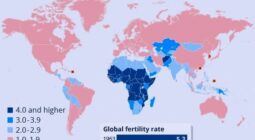International Women’s Day is a global event celebrated annually on March 8 to commemorate the cultural, political, social, economic achievements of women marking a call to action for accelerating women’s equality.
This Day is both a day to celebrate the achievements of women around the world and also an occasion to celebrate the progress made towards achieving gender equality and women’s empowerment.
Also to critically reflect on those accomplishments and strive for a greater momentum towards gender equality worldwide.
According to history.com, after the final day of the annual convention of the National Woman Suffrage Association, on March 8, 1884 women’s rights leader Susan B. Anthony appeared before US Congress to lobby for a constitutional amendment “that shall prohibit the disfranchisement of citizens of the United States on account of sex.” But had failed to win approval, and Anthony continued to address lawmakers on its behalf every year after, until her death in 1906.

Sadly, Anthony did not live to see her tireless work rewarded: In 1920, the 19th Amendment was ratified, and women won the right to vote. The amended ratification was nicknamed the “Anthony Amendment.”
In 1979, with the release of the dollar coin, the suffragette became the first woman to be depicted on a circulating U.S. coin, honoring her massive contribution to American history.
The very first National Woman’s Day was observed in the United States on February 28, 1909 that emerged from the activities of labor movements in America, the Socialist Party of America dedicated in honor of the 1908 garment workers’ strike in New York where women protested against harsh working conditions.
The following year, at the second International Conference of Working Women in Copenhagen, Denmark, women’s rights activist Clara Zetkin called for an international women’s day to give women a greater voice to further their demands for equal rights.
It was unanimously approved by the female attendees from 17 countries, including Finland’s first three women Members of Parliament.
After the observation of National Women’s Day in the USA, International Women’s Day was first celebrated in Austria, Denmark, Germany and Switzerland on March 19, 1911, following the agreement at the Copenhagen conference.
Russia celebrated its first International Women’s Day two years later on the last Sunday of February – February 23, 1913.
International Women’s Day was marked for the first time in March 1911 – and the date was fixed as March 8 in 1913.
On March 8, 1914 there was a women’s suffrage march in London, calling for women’s right to vote, at which high-profile campaigner Sylvia Pankhurst was arrested.
In 1917, women in Russia chose to protest and strike under the slogan “Bread and Peace” on the last Sunday in February (which fell on 8 March on the Gregorian calendar). Their movement ultimately led to the enactment of women’s suffrage in Russia.
But it was in 1945 that the Charter of the United Nations became the first international agreement to affirm the principle of equality between women and men but it was only on March 8 during International Women’s Year in 1975 that the UN celebrated its first official International Women’s Day for women’s rights and world peace.
Two years later, in December 1977, the General Assembly adopted a resolution proclaiming a United Nations Day for Women’s Rights and International Peace to be observed on any day of the year by Member States, in accordance with their historical and national traditions.
Today, International Women’s Day belongs to all groups collectively everywhere. It is a day to recognize the extraordinary acts of women and to stand together, as a united force, to advance gender equality around the world.
This year’s International Women’s Day is marked with the theme “Gender equality today for a sustainable tomorrow” that focuses on women and girls living in crisis situations in a world full of conflicts.

In crisis, few remain unscathed. But women and girls are especially vulnerable as they are among the poorest, most disenfranchised and most disempowered in their communities.
Nearly half of all women in 57 developing countries are denied the fundamental human right of bodily autonomy.
Yes, the world is in crisis. According to the UN reports, in Yemen, a woman dies every two hours in childbirth for lack of obstetric care, and more than one million pregnant and breastfeeding women are acutely malnourished.
In Tigray, Ethiopia, any progress in reducing maternal mortality is eroding as conflict devastates maternal health services.
In Afghanistan, which has one of the highest maternal mortality rates in the world could lead to an estimated 51,000 additional maternal deaths, 4.8 million unintended pregnancies and a near doubling of the unmet need for family planning between now and 2025.
Syria which is in grinding conflict for the eleventh year, gender-based violence has become the norm.
And now, in Ukraine, hundreds of women seek safety underground to give birth as the streets explode aboveground.
International Women’s Day is celebrated as a national holiday by countries across the globe marking the women’s successes.
On the centenary in 2011, sitting US President Barack Obama called for March to be known as Women’s History Month saying “History shows that when women and girls have access to opportunity, societies are more just, economies are more likely to prosper, and governments are more likely to serve the needs of all their people.”
The day marks a call to a gender equal world free of bias, stereotypes and discrimination and one that is diverse, equitable, inclusive while differences are valued and celebrated under the banner of purple, along with green and white are considered the colors of International Women’s Day.
On this International Women’s Day, it is must everyone to “actively call out gender bias, discrimination and stereotyping each time you see it.”









